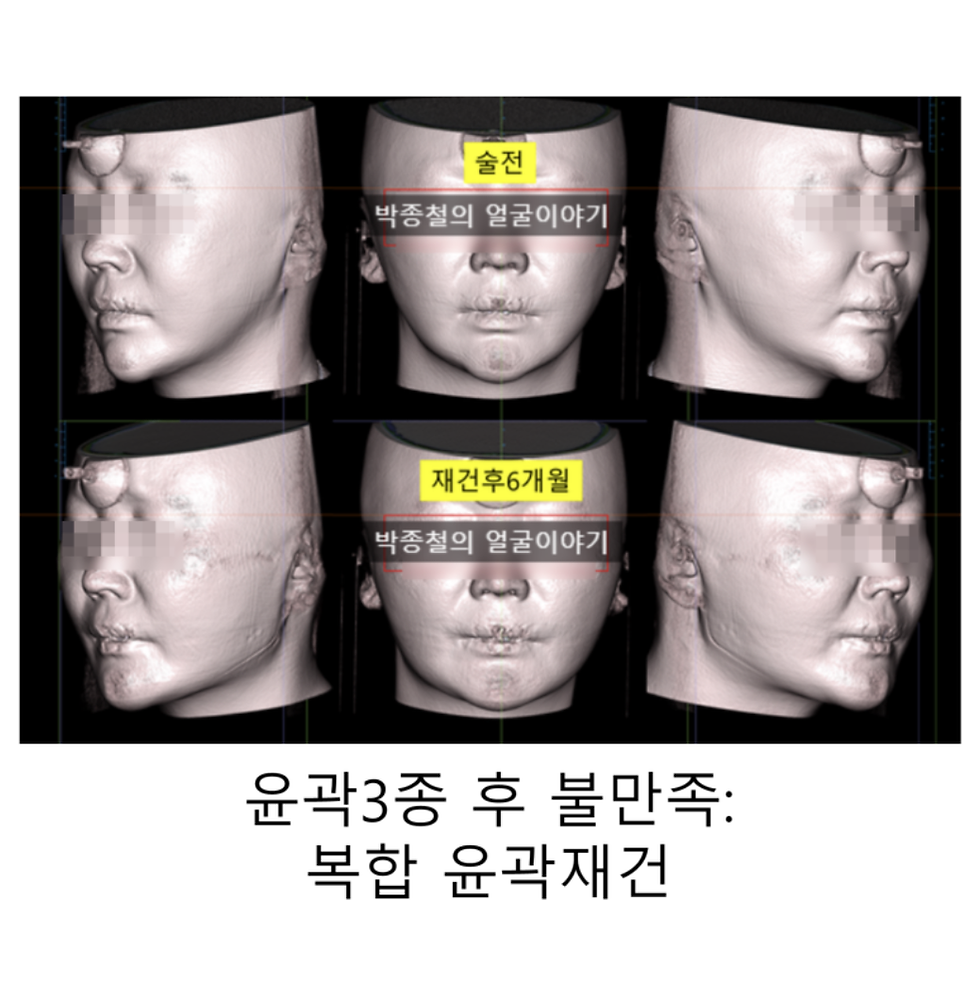3D Jaw Surgery: A Comprehensive Guide to Understanding the Latest Advancements
- Dr. Park

- Dec 11, 2024
- 3 min read
3D jaw surgery represents a significant leap forward in orthognathic surgery, offering enhanced precision and efficiency compared to traditional methods. However, the term "3D jaw surgery" is often used ambiguously, leading to confusion among patients regarding the specific techniques employed in their treatment. This article aims to clarify the core concepts, technologies, and variations within 3D jaw surgery.
What is 3D Jaw Surgery?
3D jaw surgery utilizes computer-aided technology for meticulous surgical planning and execution. This process typically involves four key elements:
CT (Computed Tomography): Acquiring detailed 3D images of the patient's facial bones for comprehensive analysis.
CAD (Computer-Aided Design): Creating a virtual surgical plan on a computer based on the CT data, enabling precise simulation and prediction of treatment outcomes.

3D Jaw Surgery CAM (Computer-Aided Manufacturing): Fabricating custom surgical guides, splints (wafers), and plates based on the CAD design.

3D Jaw Surgery customized plate Guiding/Navigating: Employing surgical guides to ensure accurate positioning of the jaw during surgery. Patient-specific plates may also be used for real-time tracking and verification of jaw movement, acting as a navigation system.

3D Jaw Surgery guiding
Core Technologies in 3D Jaw Surgery
3D jaw surgery represents the integration of CAD/CAM technology, widely used in manufacturing, into the medical field. However, its application in orthognathic surgery presents unique characteristics:
CT Data Utilization: Unlike manufacturing, which relies on standardized materials, 3D jaw surgery necessitates precise understanding of the patient's unique anatomy. CT scans provide the foundation for creating a 3D representation of the patient's skeletal structure.
Wafers and Patient-Specific Plates:
Wafers: Primarily used to adjust jaw position based on dental occlusion. While effective, they may have limitations in achieving skeletal accuracy.
Patient-Specific Plates: Designed to reposition the jaw based on the patient's skull, offering superior precision at the skeletal level.
Guiding (Surgical Guides): Essential for accurate placement of patient-specific plates. These guides ensure precise execution of the surgical plan.
Classification of 3D Jaw Surgery
3D jaw surgery can be categorized into three levels based on the extent of technology utilization:
Level 0: Surgical planning using CT scans.
Level 1: CAD-based planning with CAM-fabricated wafers.
Level 2: CAD-based planning, CAM-fabricated wafers and patient-specific plates, and surgical guides for precise execution.

3D 양악의 단계적 분류
The accuracy and precision of the surgery increase with each level, and surgeons may adopt different combinations of these technologies.
Why the Ambiguity in Terminology?
The term "3D jaw surgery" encompasses a spectrum of techniques, depending on the specific technologies employed and the extent of their application. This can create confusion, as some clinics may use the term to describe basic CT-guided planning, while others may reserve it for procedures involving patient-specific plates and advanced surgical guides.
Therefore, it is crucial for patients to understand the specific type of 3D jaw surgery being offered and its associated benefits and limitations.
Enhancing Accuracy with Patient-Specific Plates

Patient-specific plates are designed with pre-drilled holes corresponding to the planned jaw position. This allows for precise fixation of the jawbone after repositioning, minimizing the need for intraoperative adjustments.
Choosing 3D Jaw Surgery: Key Considerations
Before undergoing 3D jaw surgery, patients should have a thorough discussion with their surgeon to address the following:
The specific type of 3D jaw surgery being offered.
The advantages and disadvantages of each type.
The most suitable surgical approach for their individual needs.
The expected outcomes of the surgery.
Conclusion
3D jaw surgery represents a sophisticated approach that integrates CT, CAD, CAM, and guiding technologies to enhance the precision and predictability of orthognathic procedures. Understanding the role and application of each technology is crucial for patients seeking optimal treatment outcomes. As technology continues to advance, 3D jaw surgery promises to deliver even safer and more accurate results for patients in the future.



Comments